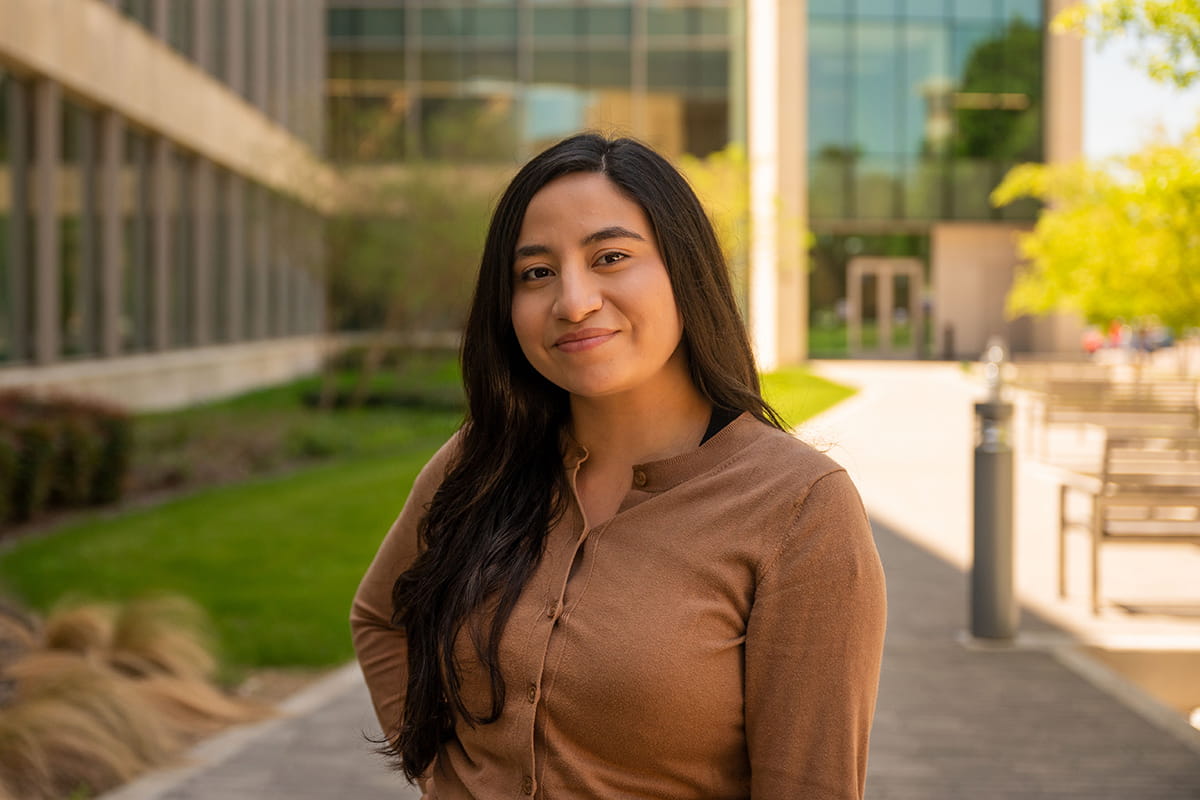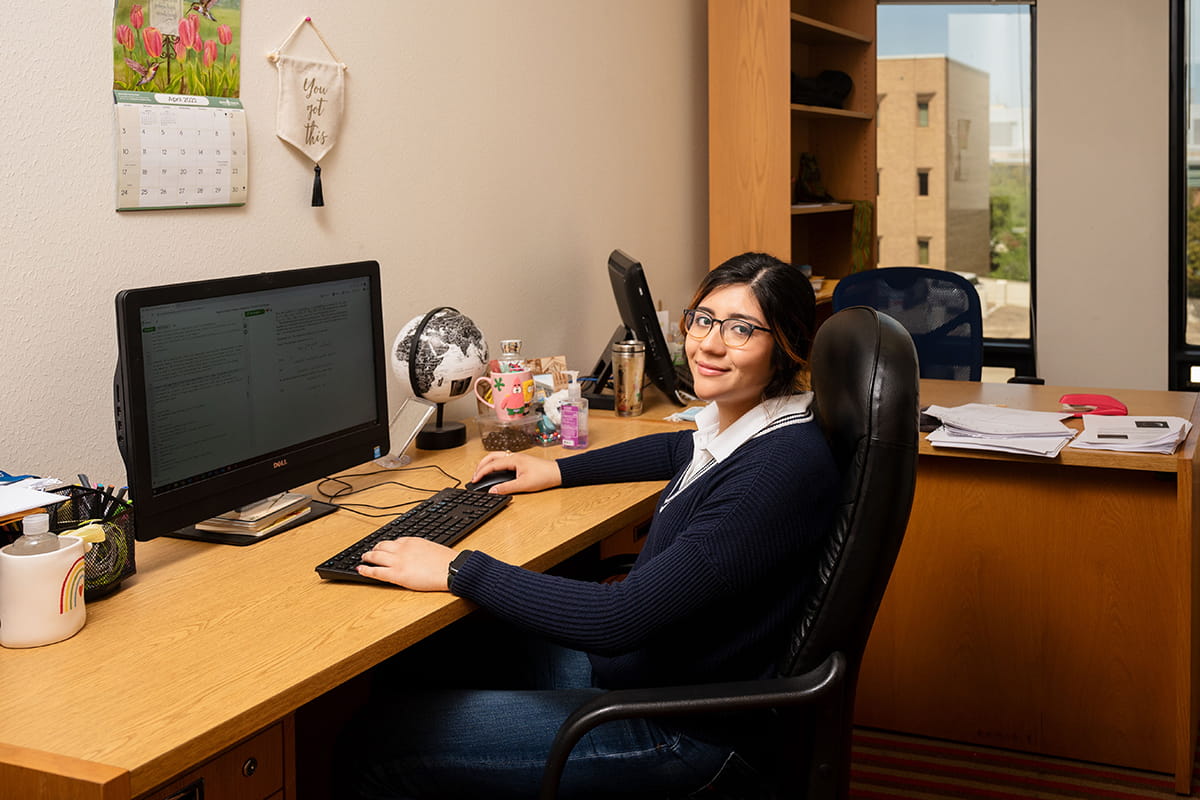UTA programs diversify and strengthen STEM workforce
The United States’ science and engineering workforce has a diversity deficiency.
Just one-third of the nation’s employees in science, technology, engineering and mathematics (STEM) fields are women, as reported by the National Science Board (NSB). Black, Latino and Native Americans collectively represent less than 25%.
In its Vision 2030, the NSB called on the nation’s academic institutions to increase the number of pathways where individuals can develop advanced skills that lead to jobs in science and engineering. Researchers at The University of Texas at Arlington have responded.
Through programs that support students from underrepresented groups, College of Science professors are investing in the diversification of the nation’s STEM-talented workforce.
Differing perspectives
According to a 2020 report by the American Physical Society, less than 8% of physics doctoral degrees awarded by U.S. institutions went to students who belong to underrepresented ethnic and racial minorities. Ben Jones, associate professor of physics at UTA, wants to help change that.
“High energy physics remains a very white male-dominated area,” Jones said. “It’s important that the composition of the physics research field reflects the composition of people in the country. Right now it doesn’t, and that’s primarily because of an uneven distribution of opportunities.”
In 2022, Jones launched the Nuclear Research Experiences for Minority Students in Texas (NREMST) internship program. The program recruits undergraduates with an interest in physics, who also are members of underrepresented minority groups in science and technology, to assist with nuclear research projects at UTA.
Funded by the Department of Energy, four interns from minority-serving institutions in Texas spent 10 weeks on UTA’s campus working with faculty and student collaborators in the Neutrinos and Rare Event Searches (NuRES) research group.
Contemporary physicists believe the key to unlocking the origin of the universe lies with the neutrino, a fast, nearly massless particle that more closely resembles nothing than something. NuRES researchers contribute to global neutrino investigations, including the NEXT search for neutrinoless double beta decay, the IceCube South Pole Neutrino Observatory and the Q-Pix DUNE concept.
When it comes to decoding the mysteries surrounding the fundamental particles of the universe, Karen Navarro, a second-year physics graduate student, said the NuRES team needs all the help it can get.
“We are working on big projects that ask challenging questions about matter and the nature of the universe,” Navarro said. “We need motivated people to join us and share differing perspectives on how to solve these puzzles.”
Navarro is assisting Jones by guiding the interns through their lab work. She lauded the program as a unique opportunity that will benefit the University and the field of nuclear physics.
“There are not many internship opportunities for young physicists,” Navarro said. “This program will help to diversify physics in higher education and nuclear research in general.”
A bridge to opportunity
As members of a national research university and minority-serving institution, UTA professors believe their mission is to help students transform their research interests into world-changing careers.
Jianzhong Su, professor and chair of mathematics, said his department’s overall goal is to strengthen the nation’s STEM workforce by producing a diverse pool of academic leaders. Currently, only 5% of underrepresented minority students, including African Americans and Latinos, complete their doctoral degrees in mathematics.
“Despite years of efforts to increase diversity, the numbers have not moved much at the national level,” Su said. “The challenge is how to develop these DEI initiatives in a scalable way, beyond small size intern and preparatory programs.”
That’s why Su and colleagues launched UTA’s Bridge-to-Math-Doctorate program, a two-semester curriculum that prepares participants for doctoral programs in mathematical sciences. The curriculum, funded by a grant from the National Science Foundation, offers a customizable learning plan where students can bridge their mathematical skills to prepare for graduate coursework. To date, the program has helped 94% of its participants enter graduate programs at research universities, including Harvard, Virginia Tech and UTA.
“We see a lot of underrepresented minority students and students from minority-serving institutions who are quite talented, but for various reasons, haven’t had access to the type of mathematical training that large research institutions offer,” Su said. “Students from institutions with limited research opportunities are those we can serve especially well.”
Ana Mendez remembers the biology class when she first learned about bacteriophages, the group of viruses that infect and replicate within bacteria. That day, she discovered the viruses’ potential to replace antibiotics as treatment for drug-resistant bacterial infections.
“I was fascinated by the idea of using a virus to treat other illnesses,” Mendez said. “If researchers could harness the power of bacteriophages to combat bacterial infections, it would solve a looming health care crisis.”
Due to limited opportunities, Mendez was unable to engage in research alongside her undergraduate coursework. She enrolled in the Bridge-to-Math-Doctorate program to boost her math and research skills.
“Joining the bridge program helped me comfortably transition to graduate school in a welcoming environment among other students like me who have had similar life struggles,” Mendez said.
At UTA, she discovered math biology, a field that uses mathematical modeling to explain biological phenomena. Soon, she joined a research project led by Hristo Kojouharov, professor of mathematics, and Justyn Jaworski, professor of bioengineering, that investigates the use of bacteriophages to improve digestive health.
As a third-year doctoral student, Mendez is looking forward to life after graduation. With the skills she has gained at UTA, she feels like the sky is the limit.
“I would like to become a university professor, but I also love research and could be very happy working in a lab,” Mendez said.

